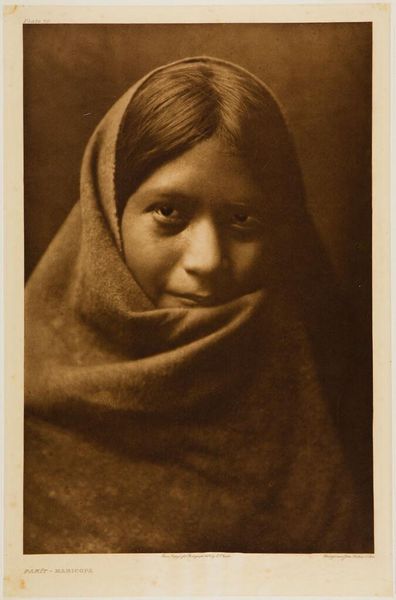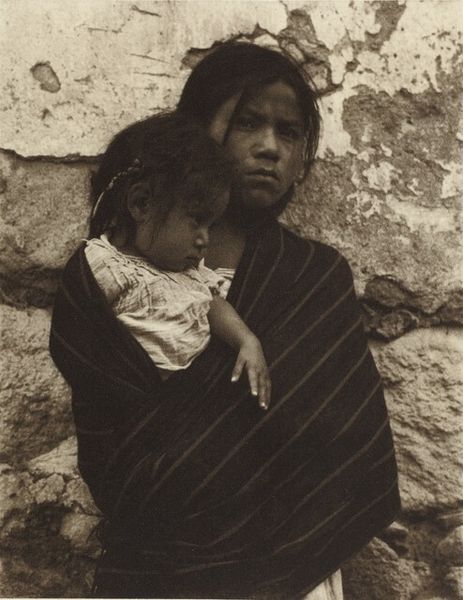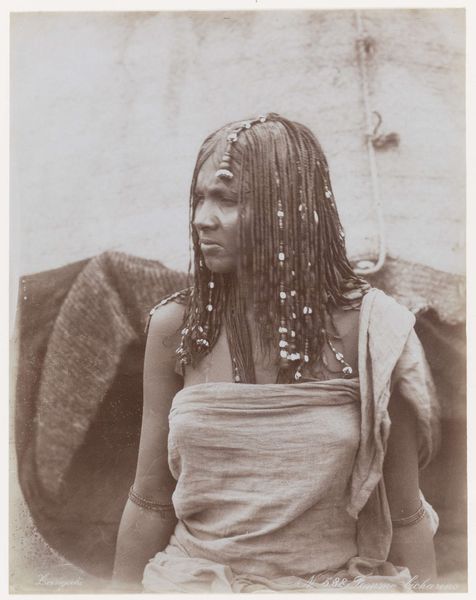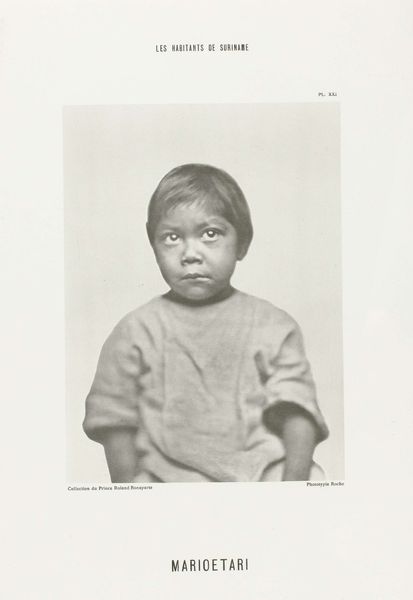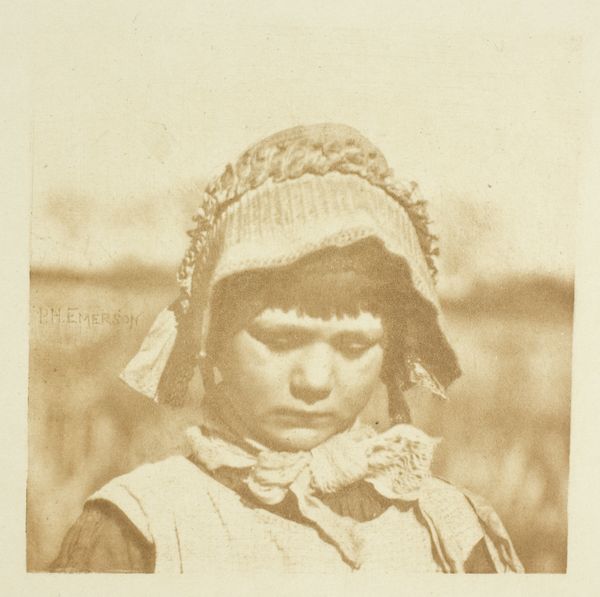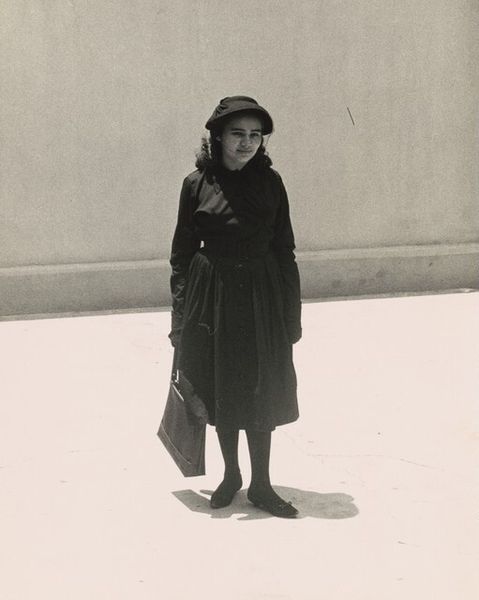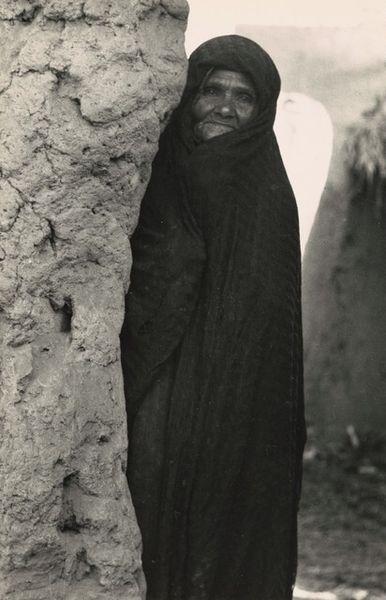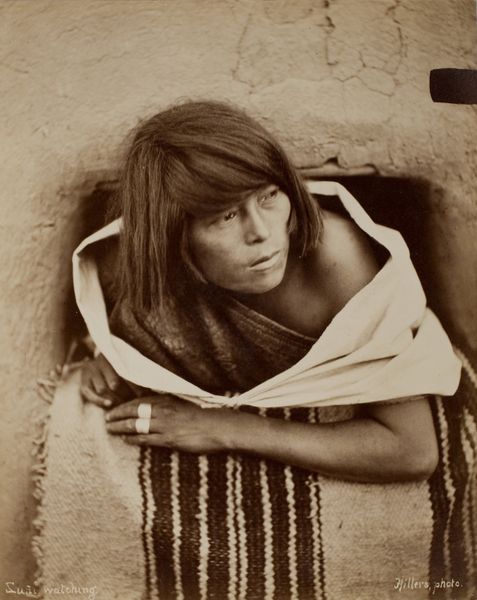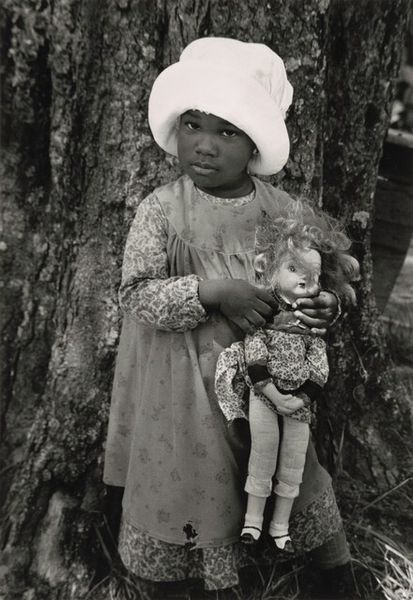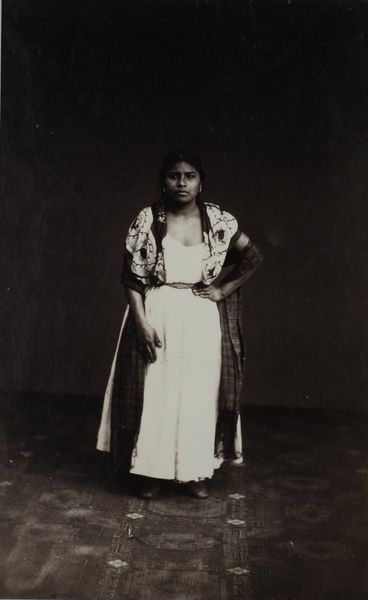
photography
#
portrait
#
character portrait
#
portrait image
#
photography
Dimensions: image/sheet: 5.3 × 5.3 cm (2 1/16 × 2 1/16 in.) mount: 13.2 × 10.5 cm (5 3/16 × 4 1/8 in.)
Copyright: National Gallery of Art: CC0 1.0
Editor: Here we have Dorothea Lange's "Native American Girl, Taos, New Mexico," from 1931, a gelatin silver print. It’s such a compelling portrait; the girl's gaze is so direct, almost confrontational. What resonates with you when you look at it? Curator: Her direct gaze certainly captures something essential. But, beyond the immediate impression, think about the shawl she's wearing. It’s more than just an item of clothing. The shawl, repeated in countless images across different cultures and times, acts as a symbol. It offers warmth, protection, modesty perhaps, but also… anonymity. Doesn't the weight of that fabric across her shoulders remind you of something passed down through generations? Editor: Yes, there’s a sense of inherited experience, definitely. So, the shawl functions as more than just an aesthetic choice? Curator: Precisely. Lange, a master of visual storytelling, likely chose this composition very deliberately. What cultural meanings can the same, very simple form acquire? Consider too the context - Taos, New Mexico, a place with its own specific history, its own iconography…it adds another layer. Doesn’t the seeming simplicity of the image belie something more complex? Editor: I see what you mean. The shawl also hides, which is intriguing considering that direct gaze...almost as if she's revealing, yet concealing something. Curator: A paradox of identity, isn’t it? Are we ever wholly seen, or do we also carry our histories, shielding parts of ourselves? That's a poignant tension. Lange asks us to ponder not just what we see, but what remains hidden. The image then serves as a reflection, doesn't it, of both the girl and ourselves. Editor: It's fascinating how one photograph can hold so many layers of cultural and psychological meaning. I'll definitely look at photographs differently now. Curator: Exactly, and that is what Iconography unveils! It teaches us to view artwork as more than just a composition or form, but a vessel containing the hopes, memories, and dreams of others.
Comments
No comments
Be the first to comment and join the conversation on the ultimate creative platform.
